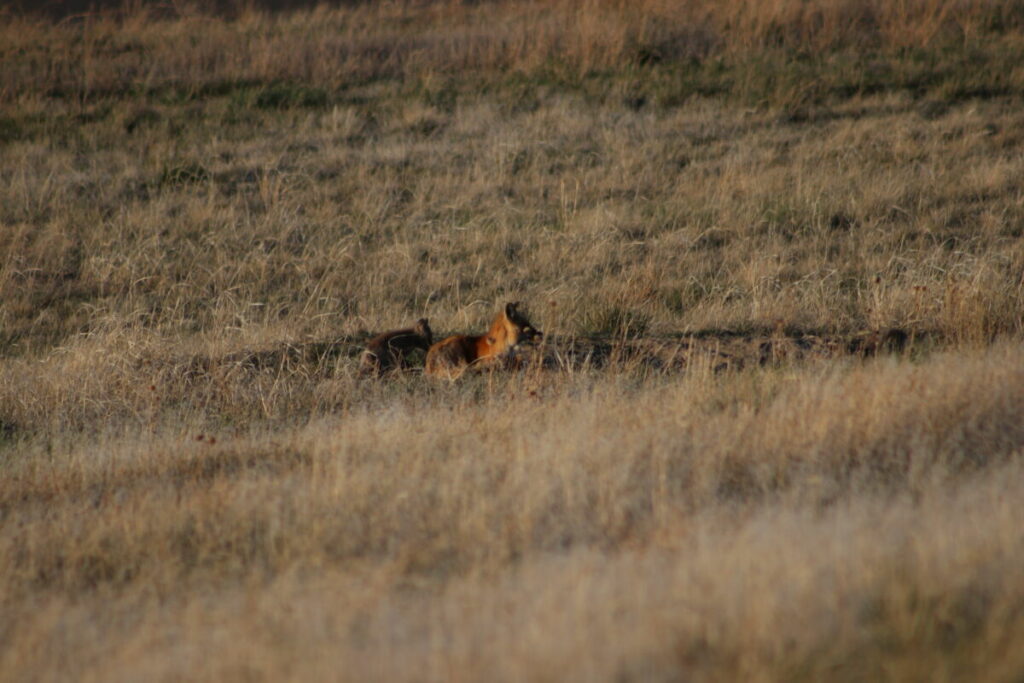6 Crucial Cody, Yellowstone Bear Safety Tips for Residents and Visitors
Written by Nick on March 20, 2023
Welcome to Bear Country
The grizzly and black bears that inhabit Yellowstone National Park and surrounding areas are truly a sight to behold. But before you visit Cody, Wyoming, or destinations within the park, do yourself a favor and brush up on these crucial Yellowstone bear safety tips.
Bears hibernate for 5-7 months each year and begin to emerge in late winter or early spring. Black bears and male grizzlies tend to come out of hibernation in late March, while female grizzlies with cubs emerge from their dens in April and early May.
When they wake up, these bears are hungry and ready to look for food. It’s a prime period for bear encounters, and if you’re heading into the outdoors — in Yellowstone, the Cody region, or anywhere in bear habitat — you need to know the basics of Yellowstone bear safety.
Here are the most important things you need to know about venturing into bear habitat in the Yellowstone region.
How Do Human-Bear Conflicts Occur?
Bears can seriously injure or kill you, but they don’t just attack people without reason. So, what will cause a bear to become aggressive?
- Surprising the bear
- Posing a potential threat to cubs
- Competing for food
- Encroaching on the bear’s territory
Let’s address these points individually.
1. Surprising the Bear
Say a bear (black or grizzly) is nosing at the base of a rotting log or lying down in a densely wooded area as you approach. Don’t assume it will see or hear you coming. Unfortunately, people have been killed because they accidentally surprised a bear, causing the animal to react aggressively.
The best way to avoid surprising a bear is to make noise as you hike. Clap your hands, whistle, sing, shout “hey bear” — whatever you prefer. It might feel a little silly at first, but this is the best way to make sure any bear that might be in your path knows you’re coming and has time to avoid you.
2. Posing a Potential Threat to Cubs
A sow grizzly will act aggressively to protect her cubs. Even the cubs themselves can be deadly if you get too close. Don’t make the mistake of thinking they’re cute or want to play with you — nothing could be further from the truth.
If you see a cub by itself, you can bet its mother is nearby. You might also come across the sow and cubs together. In either circumstance, you need to avoid giving the sow any reason to think you’re a threat.
Create distance between yourself and the bear(s), and don’t make noise. Slowly back away, but do not turn and run. Once you’re far enough, the bear(s) will likely move on, or you can turn and head back in the direction from which you came.
3. Competing for Food
For most Yellowstone visitors, competing for food isn’t a scenario they’ll find themselves in. This typically involves hunters harvesting game like elk or deer that a bear takes interest in.
But, if you’re camping, it’s essential that you properly store food in a bear box. Otherwise, the scent may draw a bear to you.
It’s not a common occurrence, but bears occasionally search dumpsters or trash cans for food as well. When you’re in the park, always dispose of food waste properly in a bear-proof dumpster.
4. Encroaching on Territory
Bears don’t build fences or draw property lines, so it’s unlikely that you’ll know you’re on a bear’s home turf until the bear decides to make it clear. However, avoid approaching any caves or holes that look like they could be a den.
So what are the best ways to avoid a bear encounter?
Situational Awareness is Paramount
All of Yellowstone National Park is bear habitat, as are adjacent areas beyond the park boundaries. The grizzly population alone occupies some 20,522 square miles within the Greater Yellowstone Ecosystem, according to the National Park Service.
As of 2019, biologists estimated 728 grizzlies were living within the park. So what does that mean?
Whether you’re walking into the general store at Fishing Bridge or hiking into the backcountry, you always need to keep your eyes open and your wits about you. The surest way to survive a bear encounter is by preventing it in the first place. You can do this by remaining observant.
The sooner you see a nearby bear, the more you can do to maintain a safe distance from the animal.
Be Prepared for the Bear to Charge
If you stumble upon a bear, don’t be surprised if it charges toward you. If that happens, you need to remember these three words above all else:
Do
Not
Run
Yeah, you’ll probably need a change of underwear after the fact, but remaining still and standing your ground is the single most important thing you can do if a bear charges you.
Running will only encourage the bear to chase you, and there is absolutely no way you’re going to outrun a bear — it just isn’t going to happen.
In most cases, a charging bear will change its mind if you stand your ground. But if it doesn’t, you’ll need to use this next Yellowstone bear safety tip.
Carry Bear Spray and Know How to Use It
Bear spray isn’t lethal, but it’s extremely nasty stuff. Fortunately, because it’s so nasty, it’s highly effective at deterring aggressive bears.
When you pull the trigger on your bear spray canister, you’ll be shooting a fine cloud of Capsicum derivatives. This substance makes it harder for the bear to see, smell, and even breathe, which gives you a chance to get out of Dodge.
The National Park Service even put together a helpful video on how to deploy bear spray.
If a bear charges you, start using your bear spray when the animal is about 60 feet away. You’ll likely have to make the decision to use your bear spray in a split second, so always keep it at the ready, such as in a holster on your belt loop.
Look, there are no guarantees with bear spray, but that little canister gives you a real chance at walking away from a bear encounter, so it’s worth its weight in gold. The stuff does expire, so make sure you check the expiration date before you decide to rely on it.
Hopefully, this goes without saying, but just to be safe: Bear spray is not insect repellant. Do not apply it to your skin or equipment in the hopes of deterring a bear. If you use bear spray in this incorrect manner, you will have a bad time.
Here are some other tips from the park service regarding bear spray, including where to buy it and how to recycle used canisters.
Surviving a Bear Attack
Unfortunately, like many other situations in life, you can do everything right during a bear encounter and still end up with the worst possible result. If you surprise a bear and it attacks you, here’s what you should do:
- When the bear makes contact — but not a moment before — drop to the ground and play dead.
- If you’re wearing a backpack, keep it on to protect your back.
- Lie face-down on your stomach, clasping your hands over the back of your neck and using your elbows to protect the sides of your face.
- Stay still and silent to demonstrate that you aren’t a threat. This could be the most difficult part, but it’s absolutely vital.
Once the bear moves away from you, don’t move or make any noise for several minutes. You need to be certain the bear is gone before you get up and go for help. If you move too soon, the bear could very well attack you again.
Remember, if you surprise a bear and it attacks you, the bear is acting defensively. Don’t fight back. The sooner the bear loses interest, the more likely it is that you’ll survive.
Here’s what the park service says about playing dead in this type of situation:
Since 1970, people who played dead when attacked by a bear during a surprise encounter in Yellowstone received only minor injuries 75% of the time. However, those that fought back during surprise encounters received very severe injuries 80% of the time.
Predatory Bear Encounters
It’s rare, but predatory and curious bears can and have attacked people. These aren’t instances of a bear defending itself, its offspring, its food, or its territory, so we’re talking about a different type of attack than the surprise encounter scenario we just covered.
If a bear comes at you with its head up and ears erect, you need to get your things (including food) and get inside a vehicle or building. Again, don’t run. If your food is safely stored in a bear box, you can leave it.
Entering a vehicle or building for safety isn’t always an option. If you can’t retreat, gather with the other people in your party and yell at the bear. You may be able to convince it to abandon its effort, but prepare to use your bear spray if the bear persists.
As mentioned above, you should start using bear spray when a charging bear is 60 feet from you. But for a slow-moving bear, wait until it’s within 20-30 feet.
If the bear attacks you, remember, this isn’t the same as the bear defending itself, so you should fight back however you can. Use any weapon you can find, because this is truly a life-and-death struggle.
If you’re involved in any kind of bear encounter inside Yellowstone National Park, no matter how minor it may seem, the park service wants to hear from you. Dial 911 in areas with cell service, otherwise notify a park ranger as soon as possible. The sooner you inform authorities, the sooner they can act to protect your fellow park visitors and the bear.




